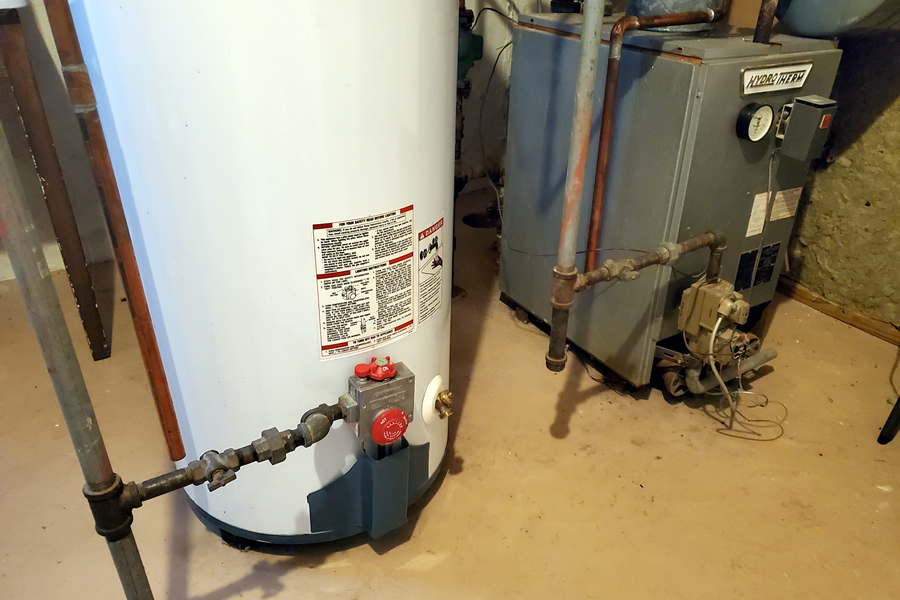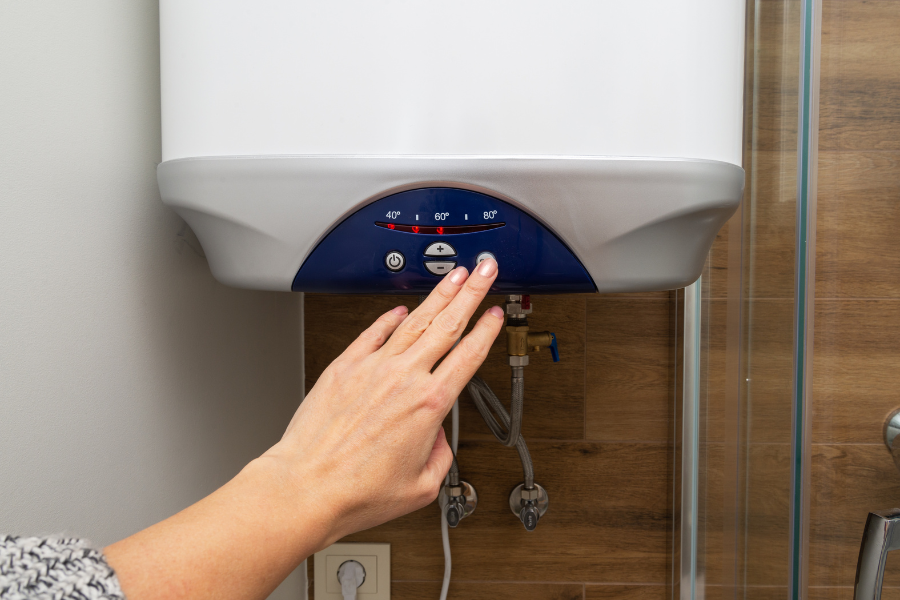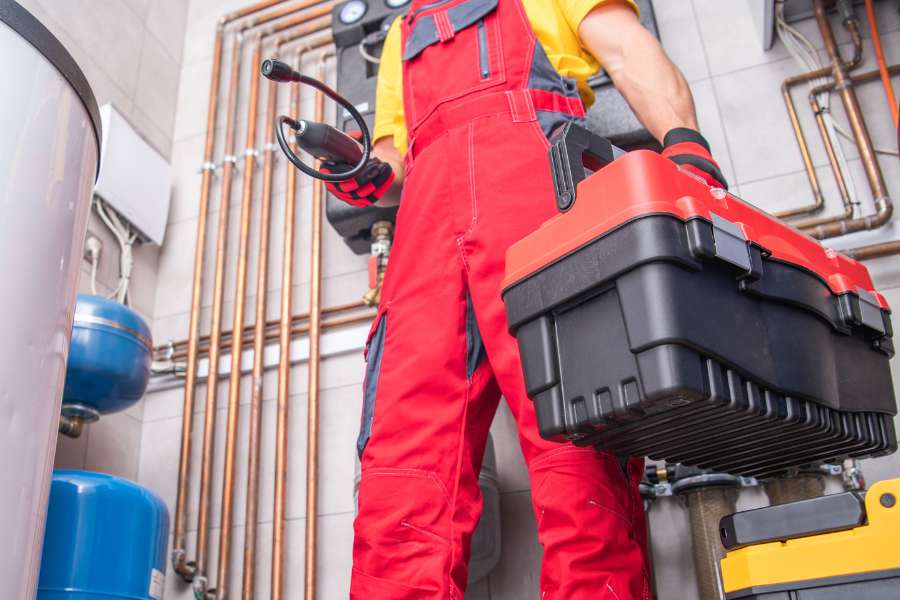


Top 10 Reasons to Choose Natural Gas
July 29, 2020


A Quick Checklist For Spring Plumbing Maintenance
May 3, 2021

How Tank-Type Gas Water Heaters Work
Everything You Need to Know About Gas Hot Water Heaters
Gas hot water heaters are a popular choice for many homeowners due to their efficiency and reliability. This article explains how gas hot water heaters work, their benefits, safety features, and answers common questions about them.
How Does a Hot Water Heater Work?
Gas hot water heaters use natural gas or propane to heat water. Here's a detailed look at the process:
- Water Inlet: Cold water enters the tank through a dip tube.
- Heating Process: A gas burner located at the bottom of the tank ignites to heat the water. The thermostat controls the temperature, ensuring it stays within the desired range.
- Hot Water Outlet: As the water heats, it rises to the top of the tank. The hot water outlet pipe then delivers the hot water to your faucets and appliances.
- Exhaust: Combustion gases produced during the heating process are vented outside through a flue pipe, ensuring safe operation.
Benefits of Gas Hot Water Heaters
Gas hot water heaters offer several advantages:
- Efficiency: Gas water heaters can heat water quickly and maintain a steady supply of hot water.
- Cost-Effective: Natural gas is often less expensive than electricity, making gas hot water heaters a cost-effective option.
- Reliability: Gas heaters continue to operate during power outages, providing an uninterrupted supply of hot water.
Types of Gas Hot Water Heaters
There are two primary types of gas hot water heaters:
- Storage Tank Water Heaters: These heaters store hot water in a tank, ensuring a large volume of hot water is available whenever needed. They are commonly referred to as gas hot water tanks or gas tank water heaters.
- Tankless Water Heaters: Also known as on-demand water heaters, they heat water only when needed, which can be more energy-efficient.
Inside a Hot Water Heater
Understanding the internal components of a gas hot water heater can help with maintenance and troubleshooting. Key components include:
- Tank: The tank holds the water that is heated and stored.
- Gas Burner: Located at the bottom, it ignites to heat the water.
- Thermostat: This controls the temperature of the water inside the tank.
- Anode Rod: Prevents corrosion inside the tank by attracting corrosive elements.
- Dip Tube: Directs incoming cold water to the bottom of the tank to be heated.
Safety Features
Pressure-Relief and Temperature Valve
The pressure-relief and temperature discharge valve is a crucial safety feature in gas hot water heaters. It functions like a car radiator cap by relieving excess pressure or temperature inside the tank. Located on the tank’s top and threaded directly into the tank, you can check its functionality by lifting the handle slightly to see if water flows through the overflow pipe. If no water flows, consider replacing the valve.
Tank Drain Valve
Sediments can accumulate at the bottom of hot water tanks over time, reducing heating efficiency and causing noises like gurgling or bubbling. Periodically draining the tank via the drain valve helps prevent these issues. Here's how you can do it:
- Turn the gas pilot control valve to “pilot.”
- Shut off the cold-water supply to your water heater.
- Open a hot water faucet.
- Attach a hose to your tank’s drain valve and place the other end in a utility sink or floor drain.
- Open the tank’s drain valve and let all the water drain out. The water might be discolored as sediments flush out. If necessary, refill the tank and drain it a second time to remove all remaining sediment.
- Once the tank is empty, shut the drain valve and refill the tank by opening the cold-water supply valve.
- Turn the propane control valve back on and ensure your gas burner ignites.
Common Questions About Gas Hot Water Heaters
Do Water Heaters Use Gas? Yes, gas water heaters use natural gas or propane to heat water efficiently.
How Does a Hot Water Tank Work? A hot water tank works by using a gas burner to heat water stored in a tank. The heated water rises to the top, ready for use.
How Do Hot Water Heaters Work? Hot water heaters use a gas burner to heat water inside a tank. The heated water is then distributed throughout your home via the hot water outlet pipe.
What is a Hot Gas Water Heater? A hot gas water heater is another term for a gas hot water heater, which uses gas to heat the water.
Are Gas Tank Water Heaters Efficient? Yes, gas tank water heaters are known for their efficiency and ability to quickly heat large volumes of water.
FAQs
Q: What are gas hot water tanks? A: Gas hot water tanks are storage units that use gas to heat and store water for household use.
Q: How does a gas hot water heater work? A: A gas hot water heater uses a gas burner to heat water stored in a tank. The thermostat controls the temperature, ensuring the water is hot when needed.
Q: What is the difference between a gas tank water heater and a tankless water heater? A: A gas tank water heater stores hot water in a tank, while a tankless water heater heats water on demand, providing hot water only when you need it.
Q: Can gas hot water heaters work during a power outage? A: Yes, many gas hot water heaters can operate during a power outage, as they do not rely on electricity to function.
Q: How do I maintain my gas hot water heater? A: Regular maintenance includes checking the anode rod, flushing the tank to remove sediment, and inspecting the gas burner for efficiency.
Q: Are gas hot water heaters safe? A: Yes, gas hot water heaters are safe when properly installed and maintained. It's important to have regular inspections and follow safety guidelines.
Gas hot water heaters are an excellent choice for efficient and reliable hot water. Understanding how they work and maintaining them properly can ensure you have a steady supply of hot water for your home. If you have any questions or need further assistance, feel free to contact us.




